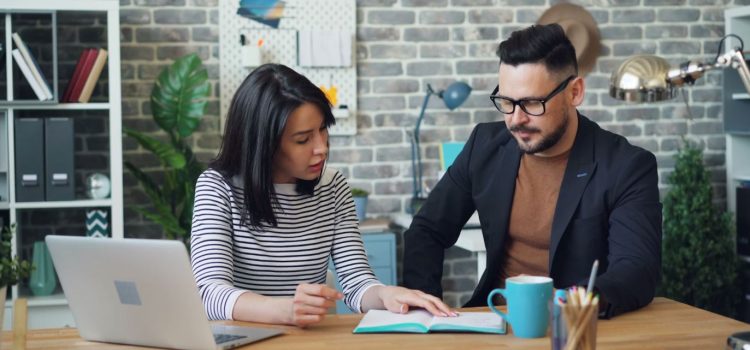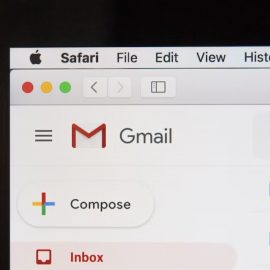
In what ways can creative collaboration be beneficial? What are the different types of creative relationships?
In Creative Quest, Questlove encourages you to not only spend time with other creators but to work directly with them. He recommends working alongside other creative people in two ways: finding mentors who can teach you basic skills and partnering with other artists on joint projects.
Here’s a look at each recommendation in detail.
Learn From Mentors
Questlove says that when you’re early in your artistic career, creative collaboration can be very helpful. He says that you should find a mentor to teach you basic skills and guide your creative development. He writes that the most important part of working with a mentor isn’t getting their advice—it’s how you use it. Focus on being a good student by listening, absorbing information, and using their feedback to improve your creative abilities.
Questlove notes that not everyone will have a formal flesh-and-blood mentor, and that’s OK. You can still learn by studying successful people in your field. For example, you can learn painting techniques by studying famous artists’ work in museums or improve your writing by reading and analyzing your favorite authors’ books.
(Shortform note: In Ultralearning, Scott Young offers advice for self-directed learning if you don’t have a formal mentor. He suggests you first engage in metalearning—learning how to learn the skill effectively. This means first asking yourself why you want to learn, what specific skills you need to master, and how others have successfully learned these skills before you. For example, if you want to study great painters like Questlove suggests, you might first research how art students typically analyze master works, what specific techniques you should look for, and how to practice these observations in your own work.)
| Challenges and Tips for Learning From Mentors While mentors can share valuable knowledge, working with experts comes with its unique challenges. In Decoding Greatness, Friedman argues that experts often actually make poor mentors because they’ve mastered their craft so completely that they can’t remember what it’s like to be a beginner. Often, their expertise has become so instinctive that it’s hard for them to break down their knowledge into learnable steps. However, you can still get a lot of value from expert mentors if you ask the right questions. Friedman suggests asking about three areas: their journey to success, their step-by-step process, and the lessons they learned. When talking with experts, don’t hesitate to ask for clarification or examples if something isn’t clear. They might not realize when they’re using complex terminology or skipping important details. |
Collaborate With Other Artists
Questlove writes that collaborating with other artists can push everyone’s creativity to the next level. He explains that most creative breakthroughs don’t come from inventing new things, but rather from combining existing ideas in fresh ways. When you collaborate with others, you combine your ideas and skills to make unique work neither of you could create alone.
To maximize the creative power of collaboration, don’t limit yourself to working with people similar to you. Try working with people from other genres or backgrounds. Their different perspectives help you learn more about your creative approach and also discover fresh ideas in your field.
(Shortform note: Sometimes, you might not realize you’re working only with people who are similar to you. In Think Big, Grace Lordan explains that two biases often limit who we choose to work with: similarity bias (preferring people like ourselves) and stereotype bias (making assumptions about entire groups). For example, you might automatically seek out collaborators who went to prestigious schools or share your background, assuming they’ll be the best partners. These innate biases highlight why it’s important to actively seek out collaborators from varied backgrounds and experiences.)
Questlove adds that it’s natural to feel competitive when working with other artists. In fact, it’s a good thing—competition can inspire you to work harder and create better art. For example, Questlove recalls a studio session where he and a few other artists took turns playing their unfinished songs for each other. When his track “Double Trouble” received a lukewarm response compared to the others, he used that feedback as motivation, returned to the studio that night, and completely reworked it.
Questlove wasn’t competing for money or fame—he simply wanted to create something that would impress his fellow artists. This kind of healthy competition pushes artists to improve their craft. You can find similarly healthy ways to compete: Join local artist meetups where people share their unfinished work and give feedback. You can even challenge yourself by trying to match or surpass the quality of past artists’ work.
| Embrace Healthy Competition With Wholeheartedness In Daring Greatly, Brené Brown argues that mindset makes all the difference between healthy and unhealthy competition. When you constantly compare yourself to others from a place of scarcity—the nagging feeling that you’re “never enough”—competition becomes toxic. Brown explains that when competing from a place of shame and inadequacy, you focus on proving your value to others. As a result, you obsess with projecting a perfect version of yourself rather than pursuing authentic work and growth. This mindset often leads to destructive behaviors like putting others down, holding back from sharing your work, and avoiding creative risks because you’re afraid of judgment. The key is shifting from a scarcity mindset, where you feel threatened by others’ success, to what Brown calls wholeheartedness—believing you’re worthy regardless of the outcome. Questlove likely had this healthy mindset during the studio session, as he used feedback as fuel for growth rather than proof of his inadequacy. For example, as he explains in an interview, he spent five hours perfecting the drum sound in “Double Trouble.” He wasn’t trying to impress anyone—he simply wanted to create the “dirty drum” sound he had in mind. |






